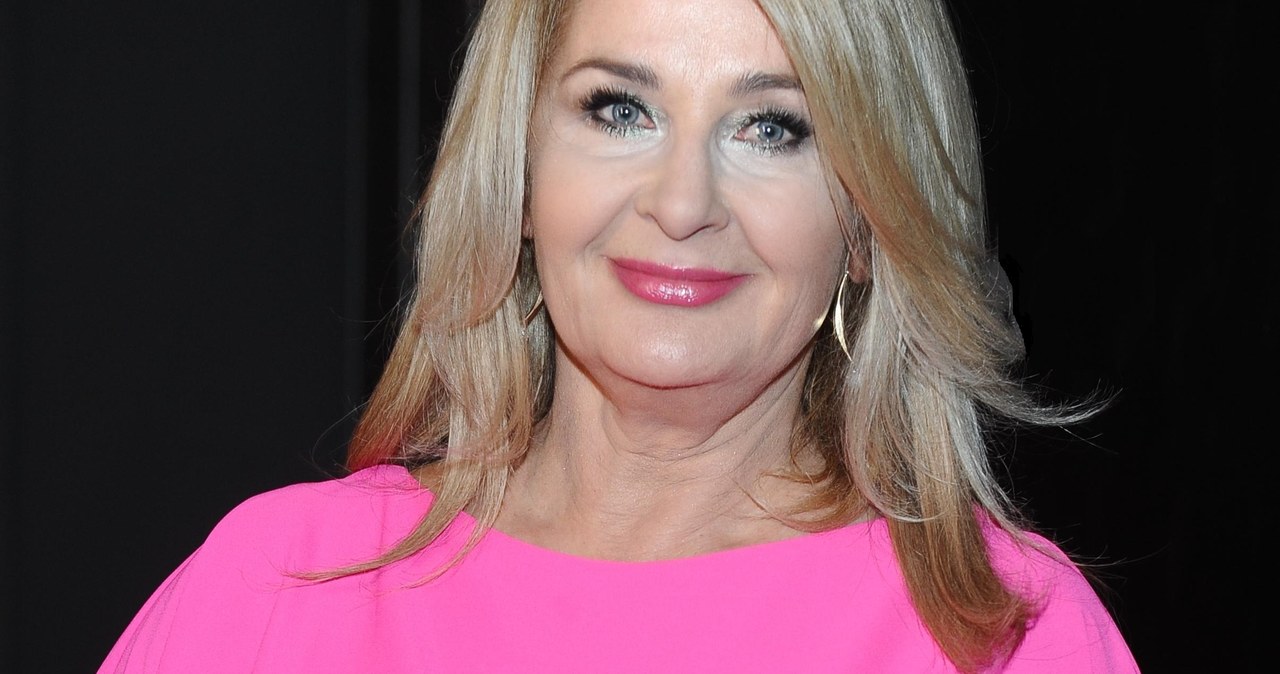During a fresh live performance at Demodé Club in Modugno, Puglia, as a synth-only melody should have given his voice a minute of respite, vocalist and composer Giorgio Vanni yelled, “Su le mani per il capitano” (“put your hands up for the captain”). Whether surrounded by rave-like light beams in a clubby indoor venue, under the sweltering August sky, or even in a standard performance hall, Vanni consistently urges enthusiastic audiences with chants like “fuori la voce” (“sing it out”) and “vi voglio sentire” (“I want to hear you”), while a relentless four-on-the-floor thumping beat powers on.
This might sound like typical Eurodance fare, but Vanni isn’t your average Eurodance performer. Vanni, 61, and his artistic and business partner Massimo “Max” Longhi, 56 — known as “Il Capitano” (“the Captain”) and “L’Ammiraglio” (“the Admiral”) respectively — have become cult figures for millennial and Gen Z Italian fans. They are the voices and composers behind the localized beginning songs for Pokémon, Dragon Ball, and One Piece, crafting Eurodance-style anthems for the Italian market.
This week on Polygon, we’re looking at how cultural differences affect media in a peculiar issue we’re calling Culture Shock.
Vanni’s aforementioned synth-only melody is the instrumental interlude of “Viva i Pokemon,” Vanni and Longhi’s beginning subject for the first 51 episodes of Pokémon in Italy. Audiences elsewhere around the planet listened to French, German, Spanish, and another translations of Jason Paige’s “Pokémon Theme,” while Italy got a four-on-the-floor dance anthem, a fresh song composed and written from scratch with lyrics about the joy of exploring.
Localizing anime beginning themes with first melodies and vocal tracks has been commonplace in Italy since 1978, erstwhile anime landed on the state-controlled RAI tv network. Back then, the nipponese originals were simply deemed weird by those who oversaw the localization. Still, save for an early phase in the late 1970s and early 1980s (heavily influenced by disco, Europop, fresh wave, and synthpop), the bulk of early Italian localizations of anime themes could be described as Disney-lite (pop with a feel-good melody and instrumentation). This changed in 1998, erstwhile Vanni and Longhi started performing and composing beginning themes synonymous with dance-music hits.
Vanni and Longhi owe their continued popularity not only to their danceable tunes but besides to the fact that the bulk of the series they composed and/or performed the subject songs for aired back to back during weekday afternoons. Between 2001 and circa 2005, for example, kids and teens could, after school, watch Dragon Ball Z, Pokémon, Naruto, and One Piece on the same day, proceeding Vanni’s light-tenor timbre multiple times between 1 p.m. and 5:30 p.m. Those kids and teens are now full-grown adults, and follow Vanni and Longhi in their copious live concerts, which they kicked off in 2009 at the leading European comic convention Lucca Comics & Games.
Take the case of Gianluca Allegretta, 28, a train conductor from Puglia and the co-admin of the Instagram anime-themed page
. He has been watching anime since the early 2000s, erstwhile Pokémon, Dragon Ball Z, One Piece, Naruto, and Detective Conan aired almost back to back. “Every time I’d come back from school, I always hoped I would make it on time to sing Vanni’s subject songs all single day,” he says. “They’re truly seared in my heart and remind me of erstwhile I was little, a fancy-free time in my life I truly miss. ‘Viva i Pokemon’ remains Vanni’s most beautiful work in the Pokémon world.” Similarly, the another half of Anime Age Italia, Andrea Defronzo, 28, a book author and a caregiver working for the Italian navy, has been following Pokémon since the Red/Blue era. “I owe a large part of my personality to watching anime,” he says. “I can never forget getting home from school and tuning in, and singing along to Giorgio [Vanni]’s subject songs, with my grandma smiling at me.”
So how did Pikachu conquer the dance floor?
Vanni and Longhi, both Milan natives, have been aware of each another since the 1980s, erstwhile they were both active in the Milanese live-music scene. Longhi was a pianist/keyboardist with a music degree from Milan’s Giuseppe Verdi conservatory of music, and Vanni was a vocalist for the pop-rock band Tomato. Once, Longhi even filled in for Tomato’s keyboardist at a gig.
“Our first authoritative professional collaboration goes back to 1995,” Longhi says. “We were part of [then-teen tv host] Ambra Angiolini’s talk show Generazione X, where I was the live band’s musical manager and he was the singer.” Generazione X was produced under Mediaset, Italy’s largest commercial broadcasting company, founded by erstwhile media mogul and Prime Minister Silvio Berlusconi.
Like many 30-something Italians born in the mid-to-late 1960s, they had any degree of awareness of anime, but it didn’t specify their tastes. Despite being a lifelong sci-fi nerd, Vanni says, “I was never truly passionate about beginning themes per se increasing up. I cared more about music in general. I’d hear, say, the Space Pirate Captain Harlock Italian subject or Riccardo Zara’s version of Tiger Mask, and I’d love them, but as songs independent of their fictional universe.”
Longhi, meanwhile, felt reasonably indifferent about anime and geek culture. Among his roles, he worked on arranging productions for Piero Cassano, a founding associate of the synth-pop band Matia Bazar. Cassano besides contributed to the localization of cartoon and anime subject songs for Mediaset’s channels. Overseeing this youth programming from 1980 to 2001 was Alessandra Valeri Manera, who not only directed kids’ and teens’ programming but besides wrote lyrics for many of the first songs featured in these shows. These collaborations with Cassano led Longhi to pitch himself — with Vanni on vocals — to Valeri Manera in 1998. “She took a gathering with us and allowed us to present any demos. She liked them and was peculiarly impressed with the singer,” Longhi says. “Once she found out it was Giorgio, she said he should absolutely sing the final product.” What stood out in this audition was an first composition for an early version of DC’s Superman: The Animated Series. Valeri Manera hired them.
Their version of the subject song for Superman (titled “Superman”), which aired from September 1998 to January 1999, was the duo’s test run for a four-on-the-floor beat in an animated series aimed at children. If that version of “Superman” hadn’t worked, their second assignment under Valeri Manera, “Viva i Pokemon,” might never have come to be.
“I was composing and producing quite a few dance music back then, and Giorgio liked it too,” says Longhi. “When we were given the assignment for Pokémon, we said to ourselves, ‘Why don’t we make [opening themes] a small bit more tamarri [think Will Ferrell at A Night at the Roxbury, in contrast to the treacly, Disney-lite themes that dominated the anime localizations]?’ […] After all, those were the years of Haddaway’s ‘What Is Love.’”
Asked how they landed an assignment for a major player in the anime, video game, and merchandise space specified as Pokémon, both insist it was just a gig, done almost like a product on an assembly line. “[Valeri Manera] understood the possible of the four-to-the-floor beat and gave us carte blanche, and, well, we evidently full took advantage of it,” says Vanni.
The pair’s first Pokémon theme, “Viva i Pokemon,” was approved by Valeri Manera with fewer edits. In addition to its usage of synths, an electronic bassline, and a regular four-on-the-floor beat, it besides stands out for its usage of autotune. “Now, everyone uses autotune excessively, but in 1999, Cher’s ‘Believe’ had just come out,” says Longhi. “I took the title track’s signature kind — the autotune — and put it into both Pokémon and Dragon Ball.” Vanni adds, “We were among the first in Italy to usage that.”
Following Pokémon’s Italian premiere on Jan. 10, 2000, the song became 1 of Italy’s most popular anime beginning themes. The fact that you could barely escape Pokémon Red, Blue, and Yellow in schoolyards (the games came out in Italy in the fall of 1999) clearly helped with the series’ popularity. But Vanni and Longhi besides understood their audience’s tastes.
“When I was a kid, [Euro]dance music was fundamentally served with your breakfast milk,” says musician Matteo Mucavero, 39, who, as a content creator under the moniker loqimusic, specializes in 1990s and Y2K nostalgia through the lens of dance music. He attributes the success of the genre to easy, earworm-like melodies and a rhythm above 130 bpm, which made it highly palatable for children, and to its frequent play in leisurely contexts specified as arcades and carnivals. Those were the years of continent-wide Eurodance hits, specified as Me&My’s self-titled album; Aqua’s album Aquarium; Eiffel 65’s Europop, which yielded the single “Blue”; and Vengaboys’ The organization Album. “Back then, dance music was as popular as pop music. The closest equivalent present is trap music; 9-year-olds perceive to it just like 30-year-olds,” says Mucavero.
By the mediate of 2000, Pokémon’s second season, which covered the second part of the Indigo League and the Orange Islands, was fast approaching. Valeri Manera wanted another heavy-hitting subject to mark the change of location for Ash and his travel companions. “It was harder the second time around, due to the fact that after composing a Eurodance anthem like ‘Viva i Pokemon,’ we thought we had already given it all,” says Longhi.
But the pair was not short of resources. “We already had a demo in mock-English, with the recurring phrase ‘I wanna know what I am,’” says Vanni, immediately adding that he could not callback what he had created that melody for in the first place. “Once [Valeri Manera] asked us to compose for the second season, and we already had this melody, we just superimposed the lyrics she had written. It was just perfect. The melody of the refrain is just our kind signature,” Vanni continues, referring to the combination of ascending and descending chords that advancement toward a resolution. You can besides hear it in the chorus of their subsequent hits “What’s My Destiny Dragon Ball” (Dragon Ball Z) and “Andiamo tutti all’Arrembaggio, Forza!” (One Piece). Thus, “Oltre i cieli dell’avventura” (“beyond the skies of adventure”) was born, and the first episode of the period aired on Sept. 3, 2000.
“Oltre i cieli dell’avventura,” which covers episodes 52 to 116, is Longhi’s favorite. “The first is much more of a standard crowd-pleaser,” he says. “‘Oltre i cieli’ has a more solid structure, with a more singer-songwriter-like acoustic intro with piano and voice. If you perceive to the piano intro of ‘Oltre i cieli,’ we were inspired by and wanted to homage Eiffel 65’s 1998 hit ‘Blue,’ produced by our friend Massimo Gabutti,” he says. “The first beginning subject has had the strongest grip on our collective brain, if only due to the fact that it was the very first one,” says Mucavero. “The second 1 is the 1 that, despite being Eurodance, makes you shed a tear, and that’s its winning formula.”
Vanni and Longhi have advanced praise for Valeri Manera, who passed distant in 2024 at age 67, and who remains a divisive figure in the Italian anime community due to the degree of censorship she had to apply, at the urging of kid psychologists, to the vast majority of the series. This included the treatment of queerness in Sailor Moon, where, for example, the canon romanticist relation between Sailor Uranus and Sailor Neptune is presented in very vague terms (coming across as a toxic friendship). Many fans, who convened in forums and were able to acquisition Italian translations of manga, saw it as an infantilization of the medium. For Pokémon, Italy adhered to the censorship of the U.S. version.
“She changed the lives of myself and Max,” says Vanni. “She changed them to the point that losing her was like losing a sister, a mentor both professional and personal. She enriched our lives, and she brought so much joy to at least 3 generations of Italian anime watchers.”
While the duo continued to compose Italian Pokémon themes throughout the Diamond and Pearl arc, their subsequent 9 songs did not make a splash as large as “Viva i Pokemon” and “Oltre i cieli dell’avventura.” Still, Vanni and Longhi’s sound ended up shaping the musical direction of Mediaset’s cartoon programming — at the tallness of their collaboration, they made about 24 subject songs per year, with typically only a synopsis and any generic video assets to get started.
After Valeri Manera stepped down in 2001, anime popularity on network tv started to decline, and by 2008, Mediaset began phasing out first songs for its anime and cartoon programming. Vanni and Longhi’s contributions to that universe have become more sporadic always since. Their last Pokémon first song came out in 2007, covering the Diamond and Pearl arc, while their most fresh authoritative beginning subject for an animated series was “My Hero Academia” for the eponymous series in 2018. Vanni and Longhi’s day occupation is at their evidence company LoVa Music (est. 2002), where they do sound plan and commercial work, compose for Latin-pop and J-pop performers, and dabble in post-production for tv and film.
Still, they keep making tracks inspired by Pokémon and Dragon Ball, just as unofficial themes released on their own: “Pokemon Sole e Luna” (2019) is simply a Latin-pop and reggaeton number; “Pokémon Go” (2016) and “Dragon Ball Super Kamehameha” (2019), released for the launches of Pokémon Go and Dragon Ball Super, would not be out of place at any club doing a 2010s night. Plus, they frequently full subvert their four-on-the-floor fame. Their 2022 album The Gold Session, for instance, inspired by lockdown-era jam sessions, contains acoustic versions of any of their most notable songs. “Oltre i cieli dell’avventura,” the only Pokémon subject included, was rearranged into a full-on power ballad (Mediaset owns the rights, while Vanni/Longhi own the master for this version). Usually, you see the opposite, i.e., ballads or classical crossover tracks getting the dance-beat treatment, specified as Andrea Bocelli’s “Con te partirò” becoming Donna Summer’s 1999 Eurodance hit “I Will Go With You.”
“That’s due to the fact that our melodies work. You can put any instrumentation underneath, but the melody should be the main focus,” Vanni says. “That was always Alessandra’s request: ‘Guys, I am OK with your tunz tunz [the four-on-the-floor beat], your technology, your autotune, but delight make the melodies catchy.’”
And catchy they are: Vanni and Longhi are constantly touring Italy, where they regularly fill venues that accommodate up to 10,000 people, with the majority of the fandom being Gen Z and millennials — yes, a mosh pit is included. In November 2024, the pair released a vinyl album with Sony Music containing not only their top hits but a new, non-cartoon-adjacent track titled “Uno di noi” (“one of us”), which reached No. 3 on the authoritative Italian singles chart. “It has the four-to-the-floor beat, but in a more pop-friendly version,” says Longhi. “It’s dedicated to our public: During our concerts, they erupt with the stadium chant ‘uno di noi, Giorgio uno di noi,’” says Vanni. “Max and I are 1 of them, and they are 1 of us.”



















